Types of nets from mice and rats

The mesh, designed for arranging garden paths, reinforcing wall surfaces when applying plaster or creating fences, is also suitable for protecting frame houses from the penetration of mice, moles, rats and other rodents. Manufacturers supply the construction market with mesh in rolls and cards.

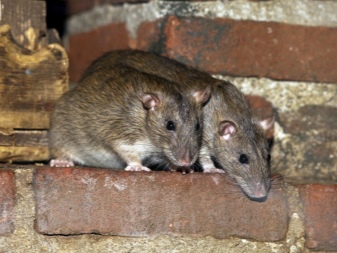
Features and purpose
Wire is used to make welded mesh. It has a small diameter, and this allows you to roll the canvas into a roll, the length of which is from 10 to 15 m with a width of 1-2 m. Depending on the size of the cell, the galvanized product is used for arranging fences and fences, plastering surfaces. The width is no more than 2 m, and the length is 6. The parameters of the custom-made material may be non-standard. The sheet or in maps model is widely used in the following cases:
- in order to create a reinforcing belt;
- in the process of arranging foundations;
- when erecting monolithic structures;
- for filling the floor screed.
A special mesh from mice, rats or moles creates a barrier for any rodent. The size of the barrier must exceed the parameters of the cell, then the pest will not crawl through the installed metal sheet. If you use a product with a very small cell size, it will interfere with the growth of plants on lawns.
A metal mesh that prevents the spread of rodents in a frame house should consist of rods with a diameter of more than 0.4 mm. Reliable protection against mice can be provided by a canvas with a mesh size of 2x2 mm. Mice and rats are able to gnaw through cement and other materials, but not metal, so the maximum size of the cells against rodents should be 5x5 mm.
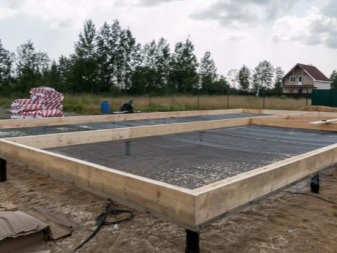

Views
Nets that can be used against rodents are of increased strength and high quality. Materials produced using different technologies have different characteristics, including service life, mesh size, corrosion resistance. They must be made of galvanized metal. The most reliable type of material against rodents is CPVS or one-piece expanded metal sheet. Often they purchase a welded mesh that has a galvanized coating.
The choice of a fiberglass model depends on the conditions of its use, since this material is not always able to provide protection from mice.
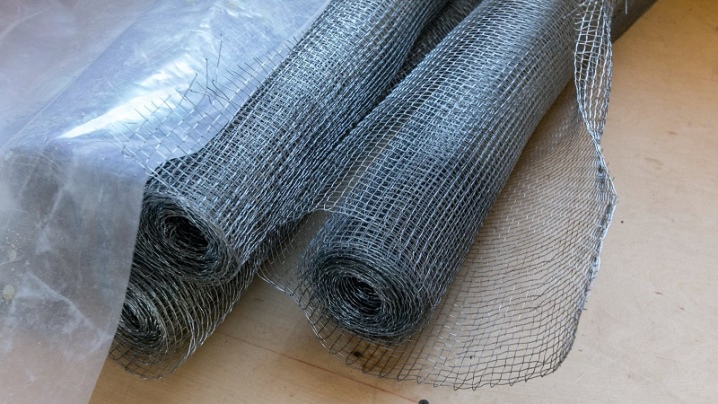
Welded
When choosing a mesh to protect a frame house from rodents, it is important to pay attention to the material of its manufacture. If it is plastic, then such a model is not worth buying, since the mice will be able to quickly gnaw through it and get into the premises of the house. Preference should be given to a metal welded mesh with a rigid connection of rods. Galvanized welded mesh can be of the following types:
- masonry, used in construction for the construction of fences, reinforcement of monolithic structures, masonry made of stone, blocks or bricks;
- reinforcement, designed for arranging fences and corrals, strengthening foundations, floors;
- plastering, allowing you to finish partitions, wall cladding made of stone, concrete or wood;
- anti-vandal, used for reinforcing foundations, partitions.
The gitter fabric used against rodents, which is a welded galvanized mesh, gives the building structures special rigidity.This is due to the presence of stiffening ribs in the form of rods, reinforced vertically.
The cells of the canvas are elongated in height, since there are more vertical rods here than horizontal ones.
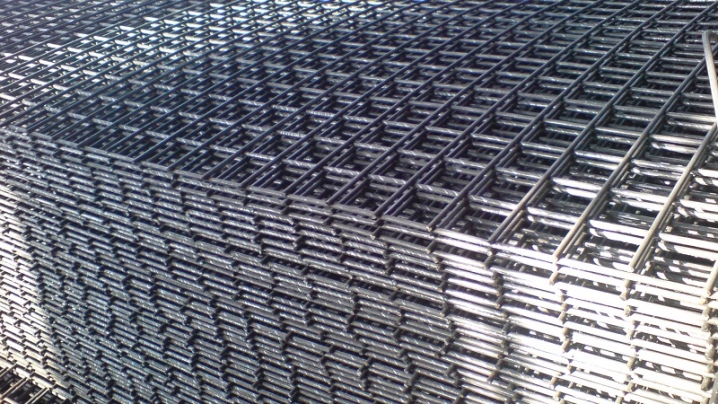
One-piece expanded metal
The strength of the CPVS mesh provides reliable protection of the frame house from mice and rats. For the manufacture of this material, a metal sheet is used, in which cuts are made on special equipment. Then the processed sheet is subjected to stretching, receiving an all-metal expanded metal mesh with ordered cells in the form of rhombuses.
The CPVS mesh is resistant to rust due to its galvanized coating. The difference between expanded metal and welded is in the absence of welded seams. The CPVS material will be rolled, and the welded mesh will be produced in cards. The one-piece expanded metal mesh has the following advantages:
- constant cell size under conditions of use;
- high strength of the monolithic structure;
- light weight and flexibility of the canvas;
- adhesion to reinforced surfaces;
- resistance to deformation;
- ease of installation;
- environmental friendliness;
- aesthetics.
Expanded metal mesh can be used for plastering surfaces with any compound. During operation, the canvas retains its shape.
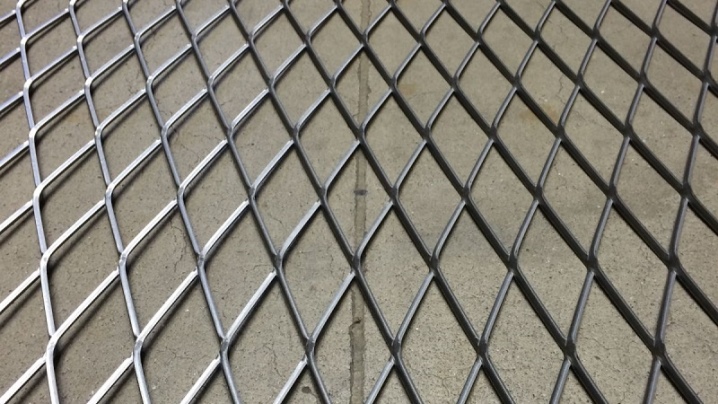
Glass cloth
The fiberglass type cloth is characterized by reduced strength and the lowest weight of all types of cloths. If you purchase such a material and use it, folded in 2 layers, then the mice will be able to gnaw through a too soft protective cloth and enter the house. This is due to the absence of welding points between the mesh strands.
Fiberglass cloth is made from thin wire. The threads are not too tightly intertwined, which provides rodents with free passage into the house through the expanded cells of the canvas. Galvanized fabric mesh with a mesh size of 5x5 mm is produced in rolls of 30 m.

Cell sizes
Fine-mesh fiberglass mesh is not suitable for protecting the house from mice. The cells of this material cease to let air through, clogging up with dust. Unlike fabric mesh, CPVS mesh with a mesh size of 5 to 6 mm has high mechanical strength. To protect the house from rodents, a welded fine-mesh mesh with a cell size of 1.5-2 mm is used, which can be used to cover the corners of the outside of the building. This material is suitable for arranging a pile-grillage foundation, as well as a basement. The canvas is purchased with a margin, given that mice can penetrate into the soil to a depth of 60 cm.
The fine rodent net should be made of metal with a thickness of more than 1.2 mm, otherwise the rats will be able to bite through the material. The mesh size of the galvanized welded mesh affects the weight of this material. For example, 1 m2 of mesh with a mesh size of 6x6x0.6 mm weighs 0.65 kg.
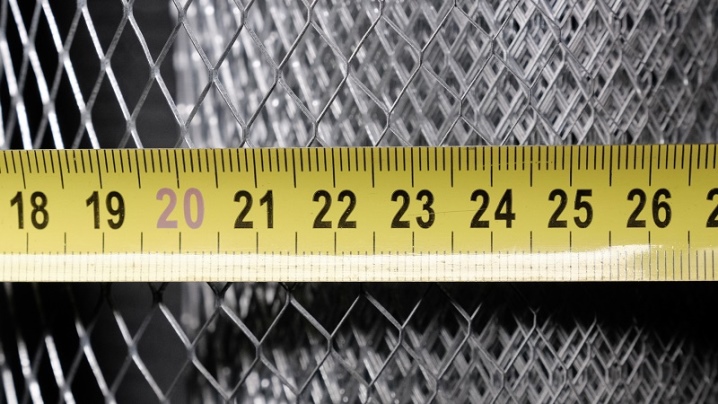
Application
Metal mesh is widely used in construction and repair. This material is irreplaceable in the process of performing the following works:
- wall cladding with siding;
- plastering surfaces;
- repair and decoration of ceilings;
- installation of a layer of thermal insulation;
- filling the floor screed with sand-cement mortar.
The metal product ensures the elimination of cracks, cracks and gaps in the process of carrying out repair work. As a result, the construction of the house acquires reliability and durability. Walls, floors and insulation will be inaccessible to mice and rats. Home protection from rodents is provided at the stage of construction. The composition of ecowool used for thermal insulation of walls, ceilings and floors in rooms can cause allergic reactions. Insulation containing 20% borax scares off mice and rats, presenting a chemical barrier to rodents.
A metal model is usually used as a mechanical protection. The material is installed on air vents in the foundation, in ventilated gaps, on pipe entries and other utilities. The arrangement of monolithic foundations simplifies the application of anti-rodent mesh, but this type of foundation is not suitable for lightweight frame structures. Frame-type structures made of wood materials can be erected on pile-grillage foundations, protecting them with a metal mesh. If you use block materials for the construction of structures, then the foundation must be monolithic. The mesh is laid over its entire surface.
If you lay the metal sheet only on the rough floor, then it will be completely impossible to protect the home from rodents. The grid is laid over the area of the foundation from the bottom of the house. This serves as protection against rodent penetration into the subfloor. To ensure the safety of the walls, the net is raised to a height of at least 1 m from the plinth, since mice can overcome a certain height.
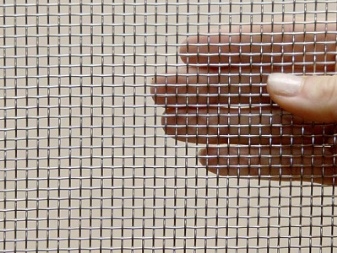
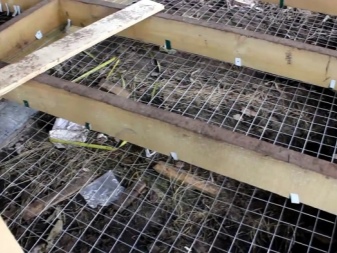
The effectiveness of using metal mesh against rodents depends on the mesh size and other characteristics of the material. Affordable galvanized canvas eliminates the spread of rats and mice in frame houses, and this extends the life of buildings.
In the next video, you can take a look at a rodent net in a frame house.













The comment was sent successfully.